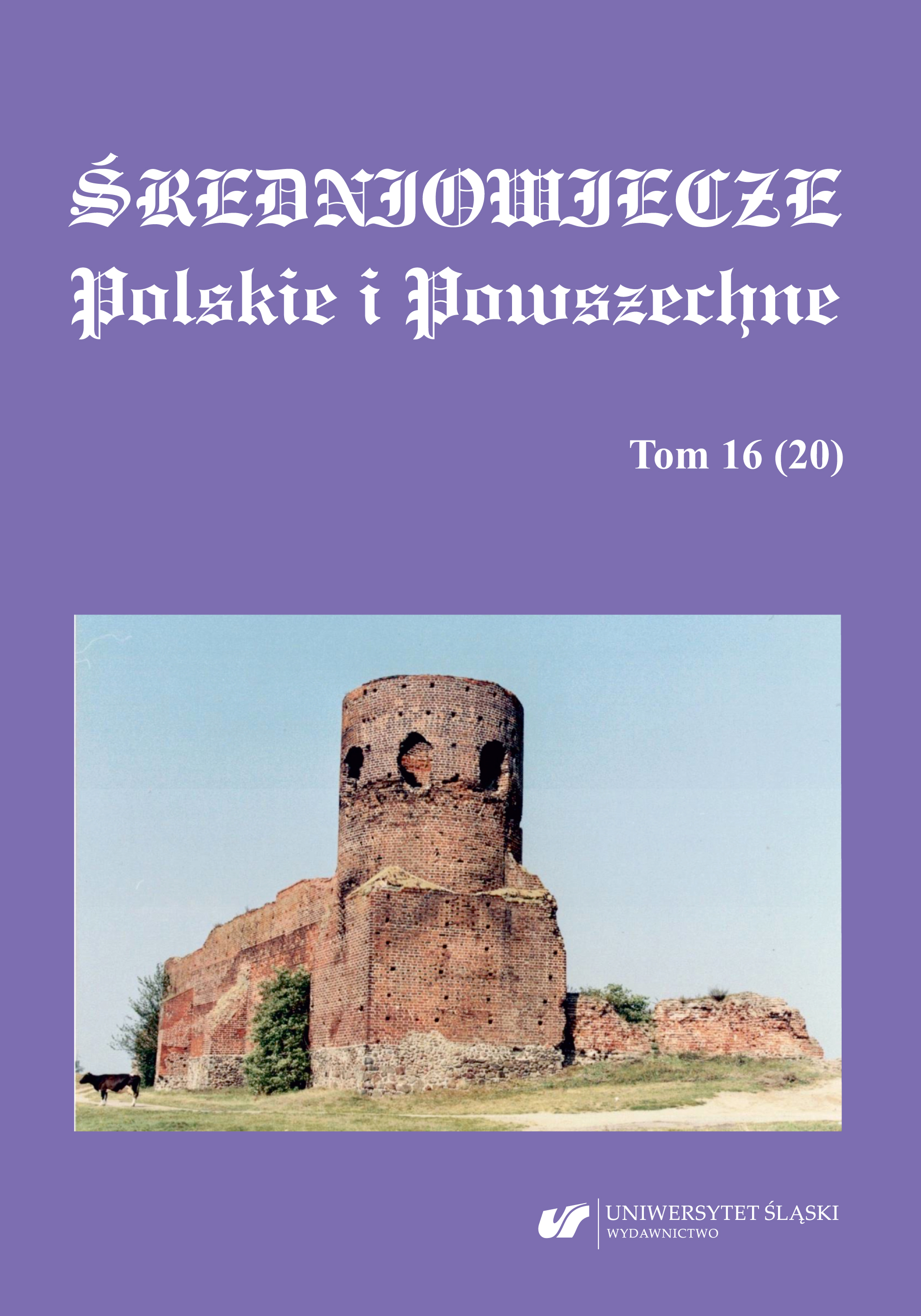Kontakty mieszczan krakowskich z duchowieństwem w świetle wzajemnego świadkowania na dokumentach (XIII–XIV wiek)
Contacts Between the Cracow Burghers and the Clergy in the Light of Mutual Witnessing on Documents (13th–14th Century)
Author(s): Jerzy RajmanSubject(s): Cultural history, History of Church(es), Economic history, Local History / Microhistory, Middle Ages
Published by: Wydawnictwo Uniwersytetu Śląskiego
Keywords: Cracow; burghers; Church; documents; witnesses on documents
Summary/Abstract: This article is an attempt to present the issue of mutual witnessing between the clergy and the burghers of Cracow on documents issued by them. The analysis covers the documents from the 13th–14th centuries (up to the year 1412). Mutual witnessing is revealed by six burgher documents (with clergymen appearing on them as witnesses) and 34 documents of ecclesiastical and clerical institutions (with Cracow burghers appearing on them as witnesses). It has been found that in the testation of documents issued by the city council of Cracow and by the college of jurors there is a lack of citation of any witnesses, including clergymen. The burghers of Cracow appeared as witnesses on a total of 34 documents issued by the clergy and church institutions. This was 73 citizens of the city, giving an average of just over two per document. We can observe the repetition of burghers’ witnesses in nine cases, most of them twice. Most burghers witnessed on monastic documents. Very numerous was the participation in the witness lists of representatives of the town elite – aldermen, councillors and jurors. In a few cases it is possible to point to family connections of burghers-witnesses with the clergy and neighbourhood in the sense of place of residence.
Journal: Średniowiecze Polskie i Powszechne
- Issue Year: 16/2024
- Issue No: 20
- Page Range: 11-35
- Page Count: 25
- Language: Polish

